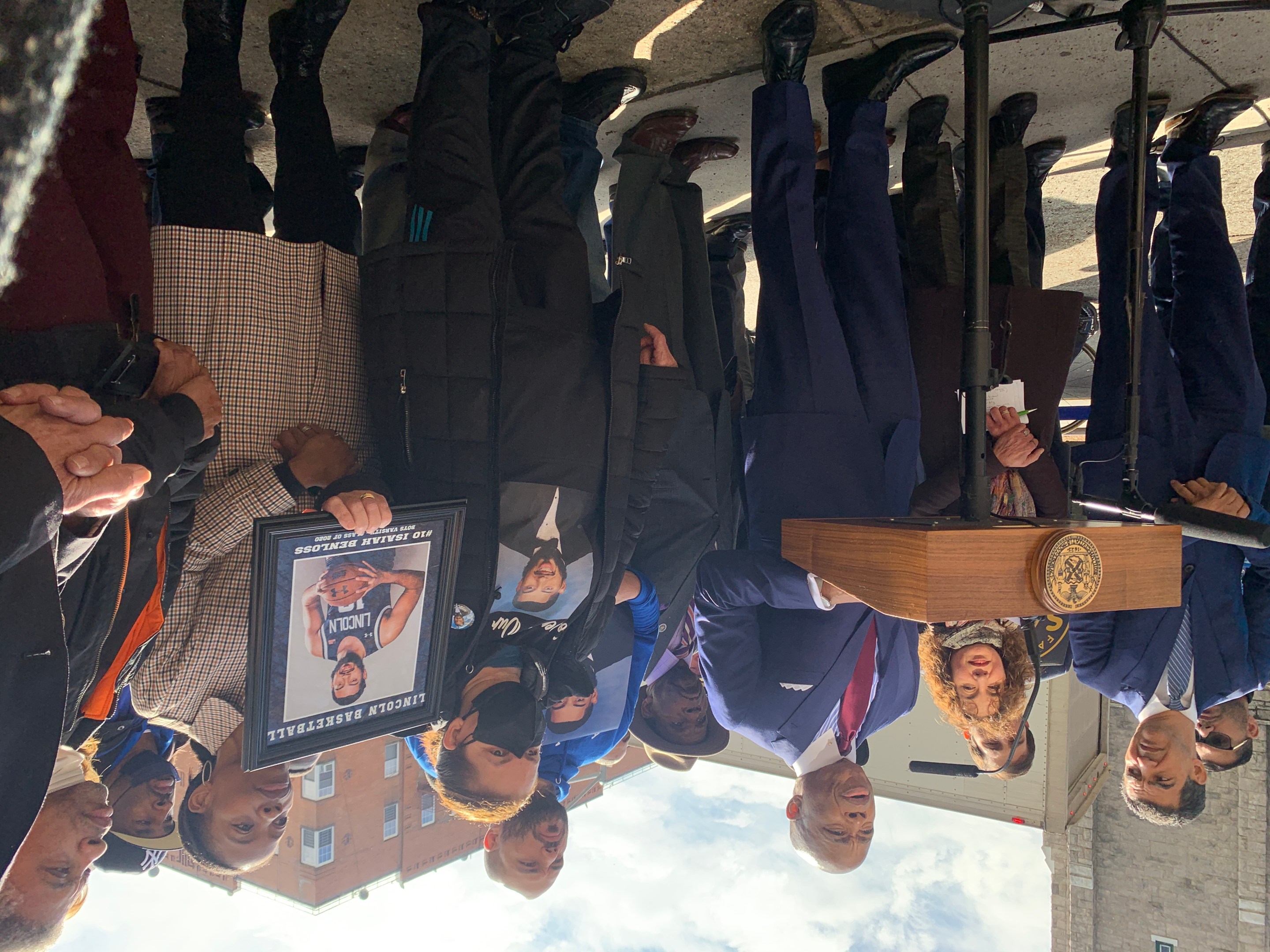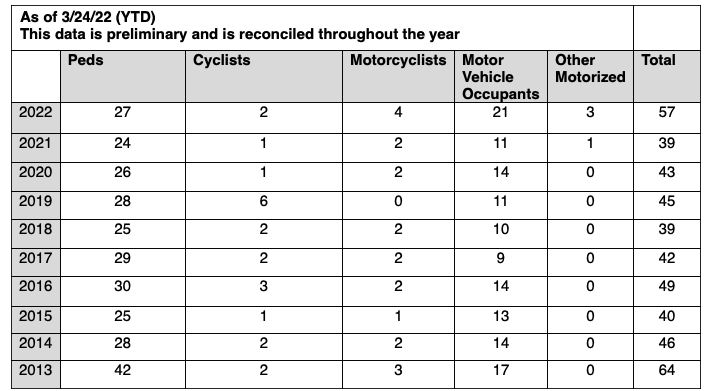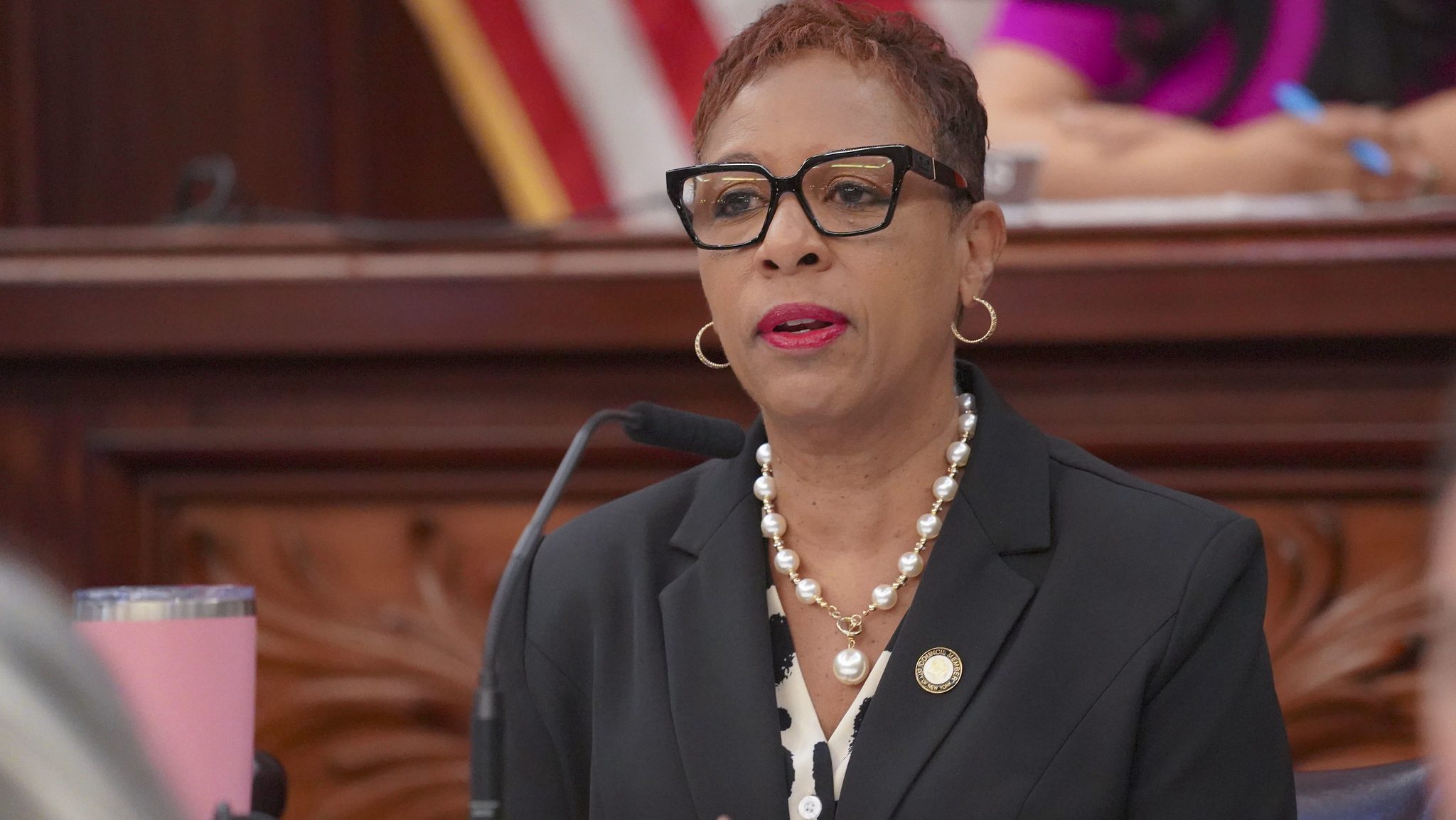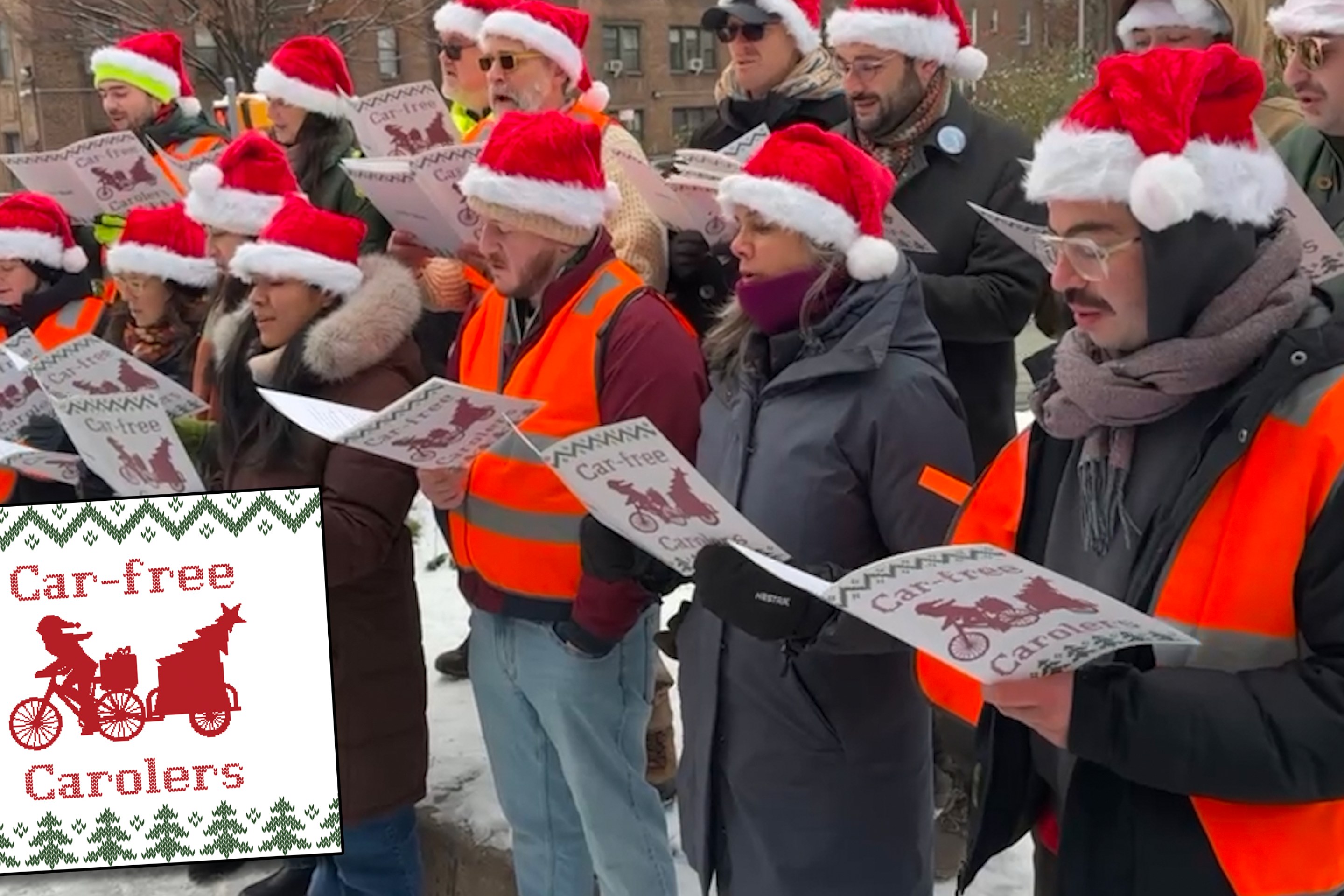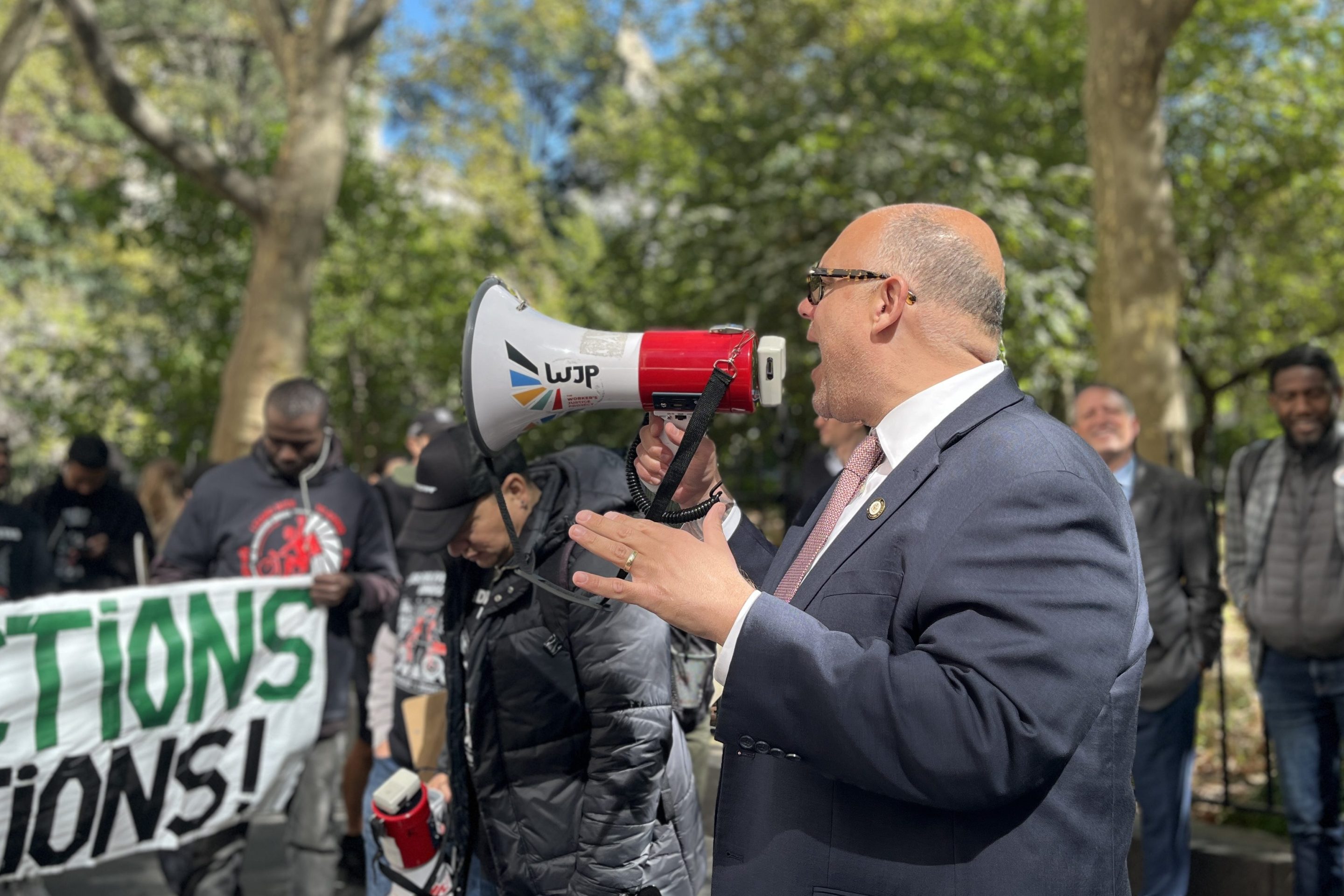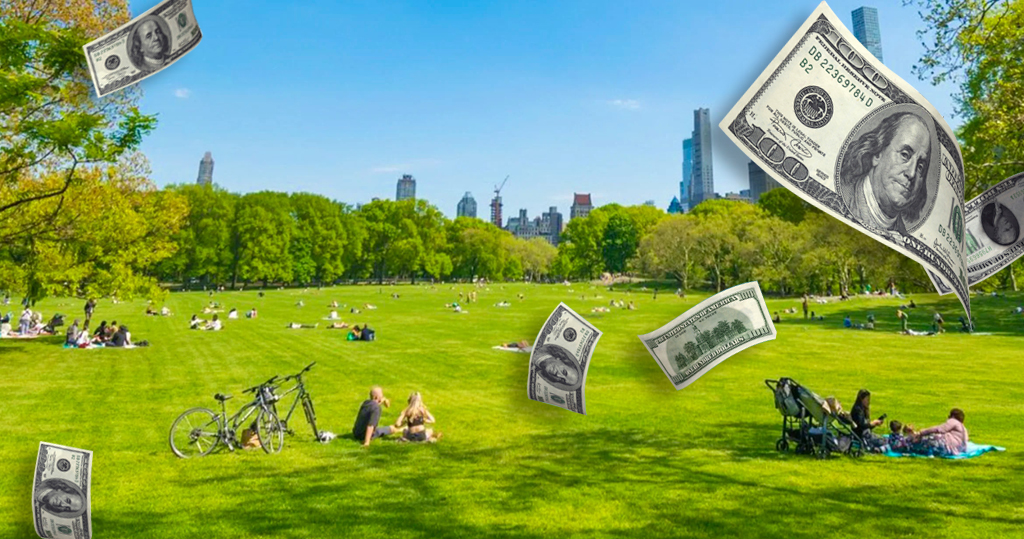"Who are you protecting?"
That's what Mayor Adams wanted to know on Friday, as he addressed lawmakers in Albany who have thus far declined to give the city control over its speed camera enforcement system, as well as allow the city to reduce its speed limits or expand its life-saving red-light camera system. The city's 2,000 speed cameras, which are currently deployed in the maximum 750 school zones, can't operate beyond July without legislative support.
"It's just unbelievable that we are here trying to convince Albany to give us the speed cameras we need that has proven to be successful. The numbers are so clear on how these cameras are helping us," Adams said before evoking the death of Lincoln HS basketball star Isaiah Benloss, who died in 2021 as a result of injuries caused by a speeding driver months earlier. Benloss's grieving family was on hand.
"And not only does he have to dodge the metal of a bullet, but he has to dodge the metal of a car that is sped through a light. Just devastating for the family," the mayor said. "The real crisis is that the law requires that we turn off the cameras [at 10 p.m.]. Who are we protecting? We're protecting the speeders? How about protecting Isaiah? Why don't we try something different in New York State? Try something different! Let's protect the innocent. Can we try that?
"And to all of the loud voices of those who want to protect people who break the law, can you join us and protect people who are following the law?" the mayor asked. "That's what I'm trying to do, so we don't lose this beautiful young child — 18 years old — because someone decided to speed at three in the morning when we had to, by law, turn off the cameras."
But the mayor's lofty rhetoric also had a hole in it: his own NYPD has pulled back from enforcing moving violations. Three reporters, including one from Streetsblog, asked the mayor why the NYPD's enforcement effort consistently falls short — whether it is the more than 50-percent drop off in reckless driving summonses written in 2021 compared to 2019, or the more recent revelation that Mayor Adams's own announced crackdown in failure-to-yield tickets led to an increase of just 0.8 tickets per day per precinct in its first month.
The mayor admitted that his officers need to do more to "send a message" that reckless driving will not be tolerated.
"We have to do a better job," he said, before admitting his police have been focusing mostly on gun violence, which he described as "a real crisis."
"We have been dealing with a host of other items, but we want to get our traffic enforcement personnel involved and send a real message out to all about police commanders that public safety include vehicle crashes, and we have to get engaged and that's the message I'm going to give to the police commissioner," he said.

He also praised Streetsblog for raising the issue that the reduction in NYPD enforcement that he inherited from Mayor de Blasio has continued on his watch.
"You keep holding us accountable [and] you help us — you identify those locations where we're weak, and we're going to respond to them accordingly," he said. "And those precinct numbers are not reflecting the issues in that area, the police commission is going to get on top of it. We're going to get them right. If you point them out to us, that we're failing, I'm not coming up with excuses, we're going to execute and we're going to get stuff done."
Editors of @StreetsblogNYC are right that one should be concerned when the executive in complete charge of NYC streets is primarily pointing at another level of government for a solution https://t.co/hi9tqhcFo0
— Jon Orcutt (@jonorcutt) March 25, 2022
The mayor also specifically addressed opponents of speed cameras, who claim they are just a revenue grab by the city.
"This just doesn't make any sense," he said. "This is not about dollars and cents. This is about common sense. ... Follow the numbers. The numbers are clear."
The Department of Transportation later provided a unique look into the effectiveness of the speed camera installed in September, 2019 at the intersection where Adams addressed the press. In the first full month that the camera was in service, it issued 232 tickets, an average of 10 tickets per day. By one year later, it issued 95 tickets for an average of four per day. And as of December, 2021 (the last month for which DOT provided stats), the camera issued 24 tickets, or an average of just one per day — evidence that drivers are getting the message, at least where that camera is located.
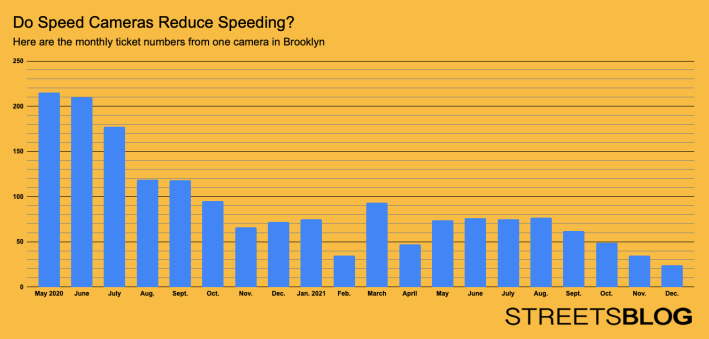
And the installation of the speed camera has resulted in fewer crashes. For instance, in the full year before the camera was installed, there were 29 reported crashes on Ocean Avenue in the one block between Albermarle and Beverly roads. In the full year after the camera was installed, there were 16 reported crashes during the hours that cameras are operating, or almost half as many.
Overall, according to the DOT, speeding violations are down 72 percent on average at camera locations during the hours they operate. And the mayor dropped a new statistic: 59 percent of traffic fatalities now occur during hours when the city’s speed cameras cannot operate. And in the zones with cameras, more than one-third of fatal crashes occurred during hours when cameras were required to be inactive.
The mayor is obviously not the first city executive to pray to the upstate gods for help. In late 2020, then-Mayor de Blasio also called on state lawmakers to do more — which they ended up failing to do, declining to pass, for example, a package of eight bills known as the Crash Victims Rights and Safety Act. The stalled bills included the so-called Sammy’s Law, which would have allowed New York City to set its own speed limits without needing Albany approval, and a bill that would have allowed the city to keep the cameras on all night long.
It's unclear if Adams will get the help he needs from Albany. The mayor and state Sen. Andrew Gounardes had hoped that home rule on speed cameras and speed limits would have been inserted into the state legislature's "one house" budget proposal, but, as Streetsblog reported, Assembly Speaker Carl Heastie and Senate Majority Leader Andrea Stewart-Cousins said they did not want policy to be in the budget, which was a common tactic of former Gov. Andrew Cuomo.
Gounardes is hoping to write and pass a bill on home rule before the end of the legislative session in June.
In the meantime, Gounades has two bills to address the issue: One bill, S5602, would dramatically expand the speed camera program by eliminating the provision that the cameras can only operate from 6 a.m. until 10 p.m. on weekdays only; would increase the cost of the fine for repeat offenders; would trigger a license suspension for the worst offenders; and extend the existing program until July 1, 2025.
And the other, S8382, would allow the city to increase the number of red light cameras from 150 intersections — "Which is like one neighborhood," Gounardes said — to 1,325 intersections.
"Frankly, it makes no sense that that the city cannot control its own destiny on its streets," Gounardes said. "Why should a Senator or an Assembly member from Plattsburgh or West Jazzy, New York [yes, he said "West Jazzy"] or anywhere outside of these five boroughs have any say on when a camera can be on, on where you can put a camera, and what the speed limit can be on the city streets. It makes no sense."
Of course, activists have long reminded the mayor that speed cameras or even human police enforcement comprise just one tool — and a pretty dull one — in the shed of Vision Zero. Rhondelle Booker Adams, whose sister Hermann Booker was killed while crossing the street on her way to work in Midwood in 2017, appreciated Adams's words and passion, but added that she wants to see much more.
"It's not only about the street cameras. That's just a small part of it," she said. "We need a whole restructuring of how the streets are actually laid out. The infrastructure is not built for pedestrians, for cyclists. It's built for cars! And that's why people keep getting run over. So the bigger conversation needs to really be restructuring the whole layout of our streets with more thought put on pedestrians and cyclists versus people in a car, who are protected by a 2,000-pound metal behind them. That's the narrative we want pushed."
Speaking of people getting run over, the first three months of this year are the bloodiest on New York City streets since the Vision Zero initiative began in 2014, as the DOT's own statistics below show. So far this year, 57 people have been killed in crashes, up from 39 over the same period last year, which ended up being the most deadly year in Vision Zero history:
